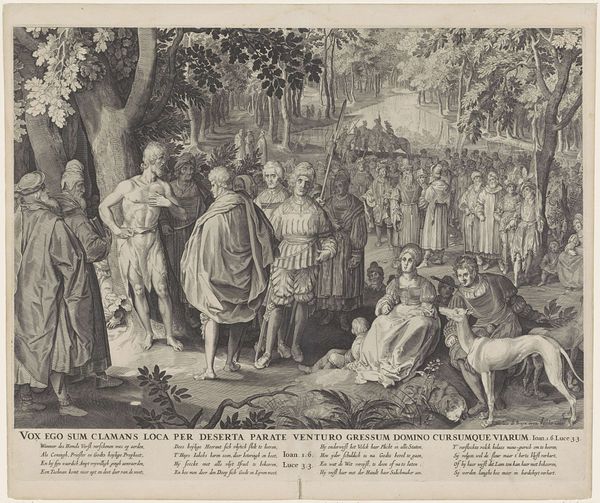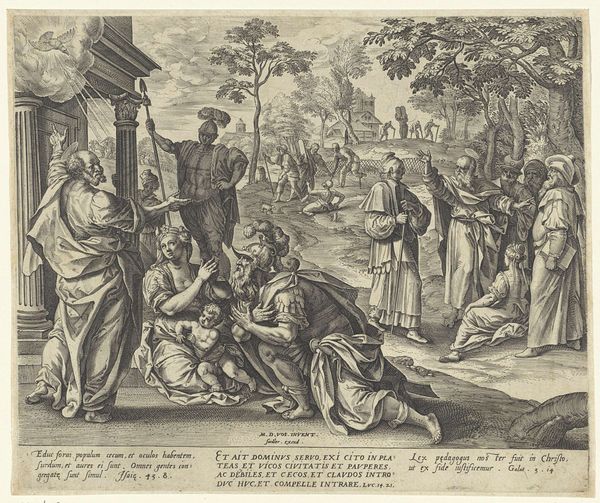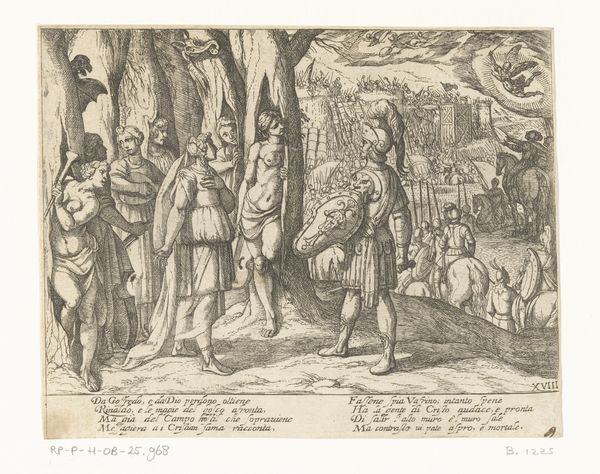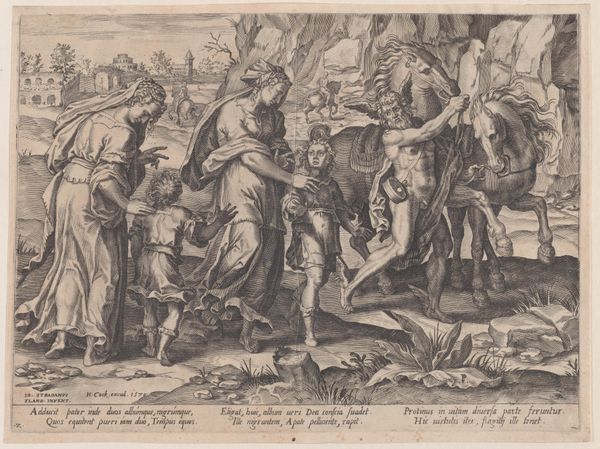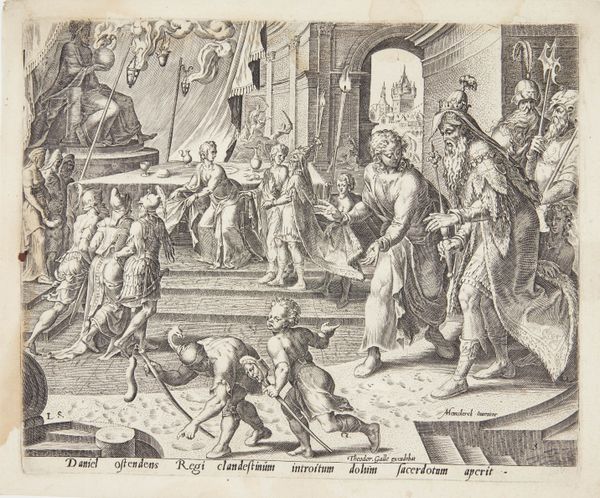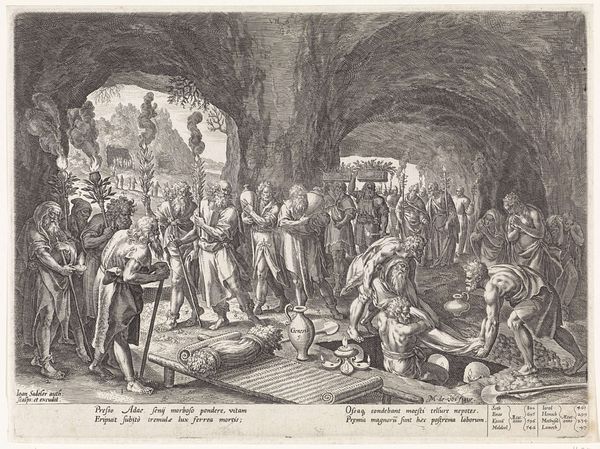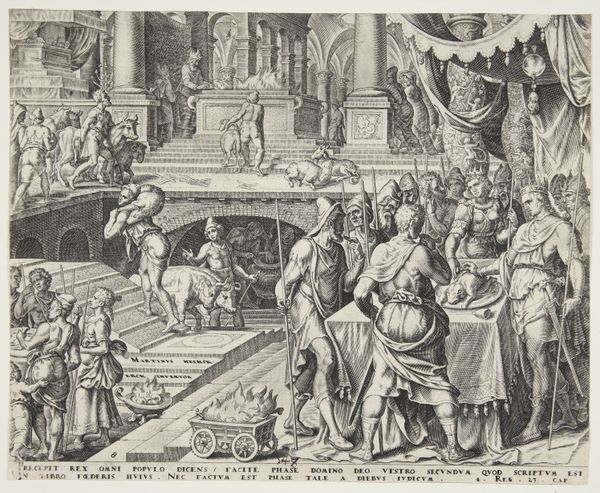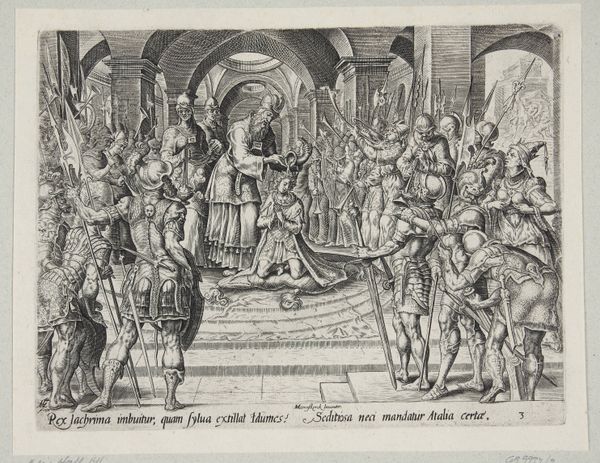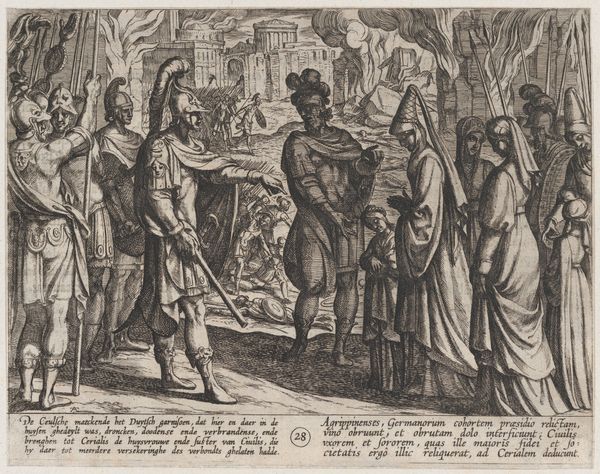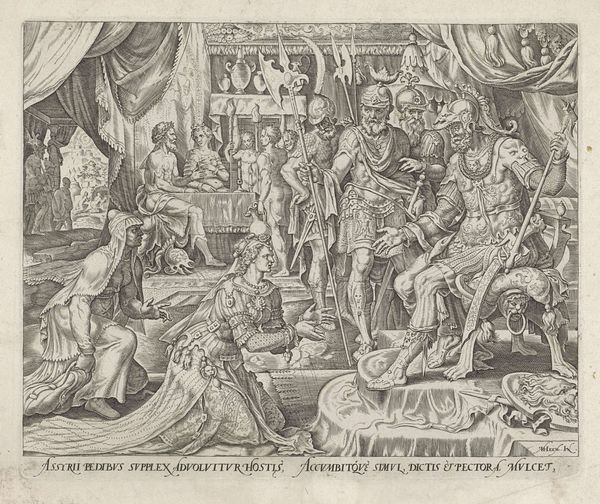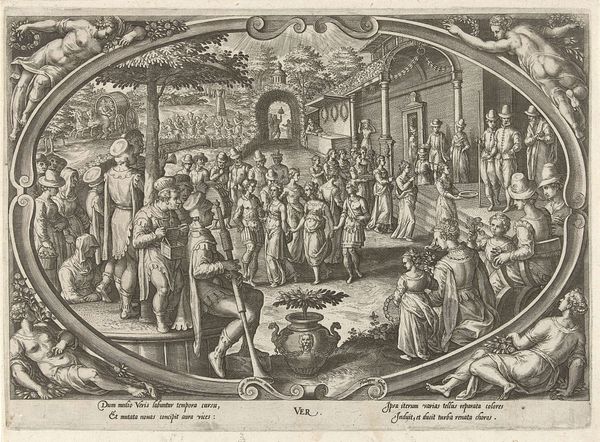
print, engraving
# print
#
pen illustration
#
landscape
#
figuration
#
history-painting
#
northern-renaissance
#
engraving
Dimensions: height 391 mm, width 498 mm
Copyright: Rijks Museum: Open Domain
Curator: Look at this print, "Prediking van Johannes de Doper"—or, "Preaching of John the Baptist." It's currently held at the Rijksmuseum, and although the artist is anonymous, we estimate it was created sometime between 1637 and 1671. What’s your initial reaction? Editor: My eyes are immediately drawn to the figure of John himself—the artist uses light and shadow to create quite a stark contrast around him, making his figure all the more pronounced against what seems like a large gathering of onlookers. It definitely pulls focus. Curator: Absolutely. The artist seems to be leveraging the figure of John to make a bold statement here. Placing a near-naked figure preaching about Christ in what might otherwise be considered an upper-class social setting—a nobleman and woman front and center. It definitely creates a sort of disruptive tension in the image, wouldn’t you agree? Editor: Very much so. It calls into question all the sartorial symbols of wealth and status exhibited throughout the print. John, of course, represents spiritual purity and righteousness, and the artist places him in stark contrast to all these very earthly symbols. Is that a greyhound in the lower corner there? Curator: Indeed it is! The greyhound’s a further signal about status – the print as a whole is rife with those sorts of details. The engraver would likely be commissioned to depict these specific settings and symbols, likely appealing to the buyers to elevate the importance of the print and their position within that image. Editor: Which really drives home the power of contrasting spiritual virtue and moral righteousness against all that excess, right? Especially by having a gathering in the woods rather than within a cathedral or public square, the engraver can more directly emphasize John’s removal from contemporary social structures and standards. Curator: Exactly. In doing so, I’d say the artwork itself challenges those viewers of status by contrasting them with John. Editor: Well, considering the wealth of symbolic cues packed in here, it really leaves a lot for us to contemplate on the role of imagery in expressing implicit meanings. Curator: Yes, certainly, understanding the historical context can help us truly understand a work like this and, more generally, the intersection of art and socio-political status.
Comments
No comments
Be the first to comment and join the conversation on the ultimate creative platform.
